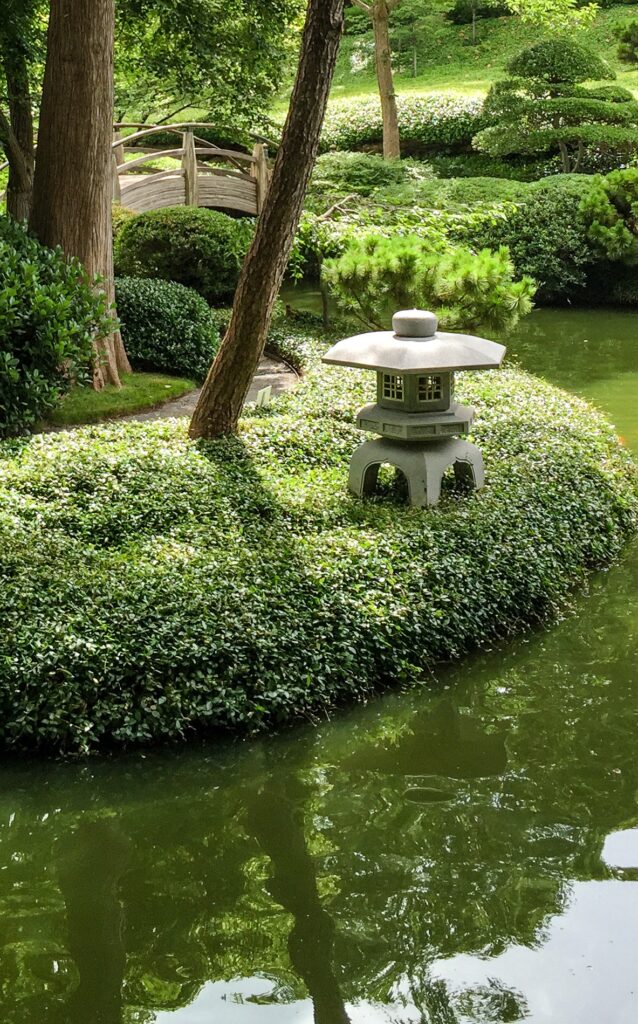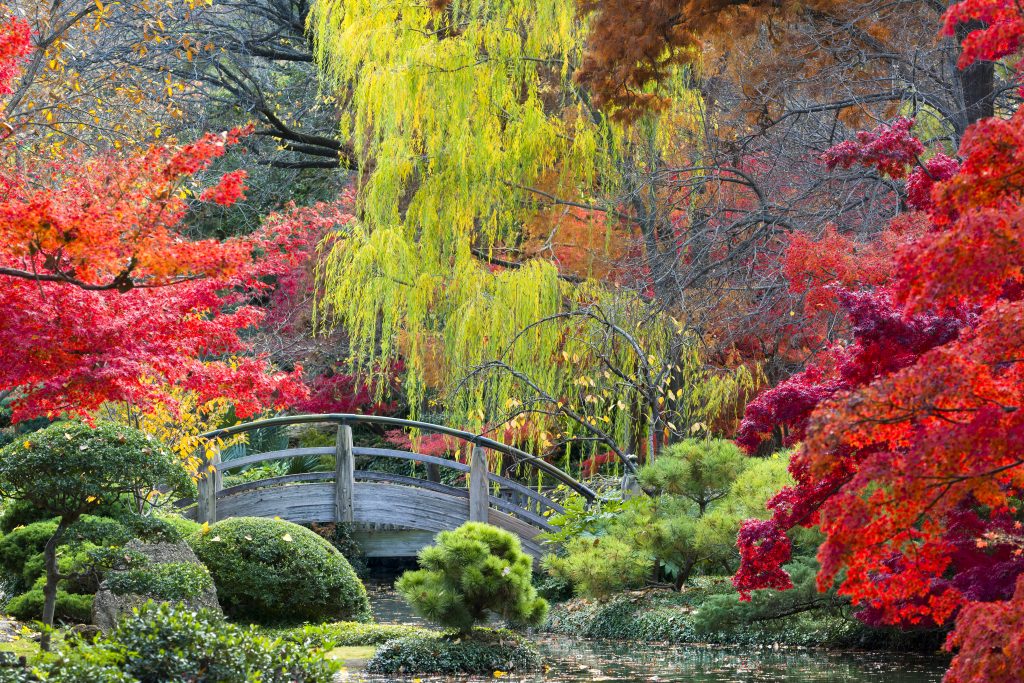
When guests wander the quiet paths of the Japanese Garden, it’s not unusual for them to stop at the top of the Moon Bridge and say, “I wish I had a place like this at home.”
That might seem impossible–the Japanese Garden is the result of 50 years of hard work by dedicated horticulturists. But Nick Esthus, Japanese Garden horticultural manager, says Japanese gardening is within the reach of anyone ready to embrace it.
“Think of Japanese gardening as a philosophy rather than a recipe book,” says Esthus. “The goal is to create a beautiful space that exists in harmony with the surrounding architecture and landscape.”
Attempting to exactly recreate a garden from Kyoto or Osaka is not only unrealistic, Esthus says, but also a failure to understand the practice.
For one thing, many plants beloved of gardeners in Japan don’t do well in our climate. Mop-head hydrangeas (Hydrangea macrophylla), camellias (Camellia japonica) and peonies (Paeonia), for example, suffer in our high heat, unpredictable winters and dry conditions.
Even if careful tending could keep these plants alive, the resulting garden would not be in harmony with the existing landscape, says Esthus.
“You need to be respectful of your site,” he says. “Japanese gardeners seek harmony, so try to avoid imposing something that is in conflict with your space.”
Seeking the right balance of respect for the landscape while working within the Japanese garden aesthetic is an ongoing challenge for Esthus and the Garden team.
“Our climate is changing, and we’re seeing that in the Garden. We’ve lost a lot of overstory trees in the last few years. Some of that is simply the expected lifecycle of the trees, but others were killed by extreme temperatures in either the winter or summer,” he says. “We’re asking what trees can we plant now that will survive as climate conditions become more extreme.”

The right plant is more often than not a native, Esthus says. “And if not native, a plant that is very well suited to our environment but not at risk of becoming invasive. We want to be very responsible in our choices.”
At the same time, Japanese gardeners seek harmony with the surrounding architecture. In the Garden, this means structures such as the Teahouse, the Pavilion and the Summer House. For most people, it means their home.
“Really pay attention to the different views of your garden you see from inside your home,” says Esthus. “Where do you want to draw attention? How can you make the garden beautiful from every angle?”
In Japan, many homes contain sliding doors that can open wide and create a combined indoor/outdoor space. Look for opportunities to bridge the division between internal and external, says Esthus.
Japanese gardens are intended as places of meditation and reflection. By embracing the philosophy of Japanese gardening, you can create a simple, beautiful, restful haven in your own yard.







